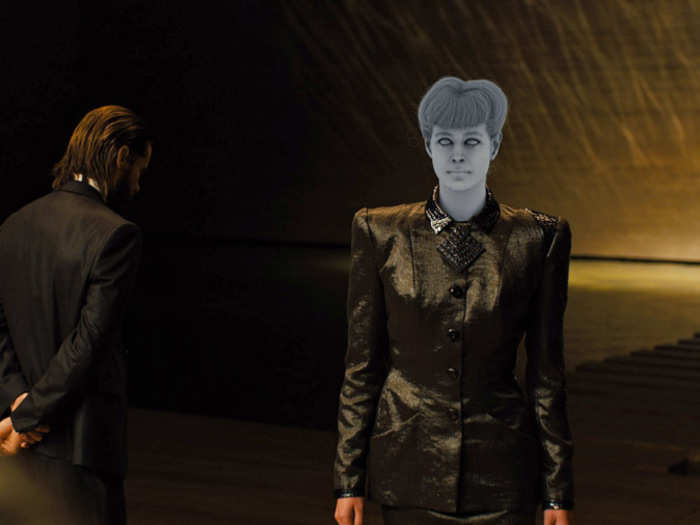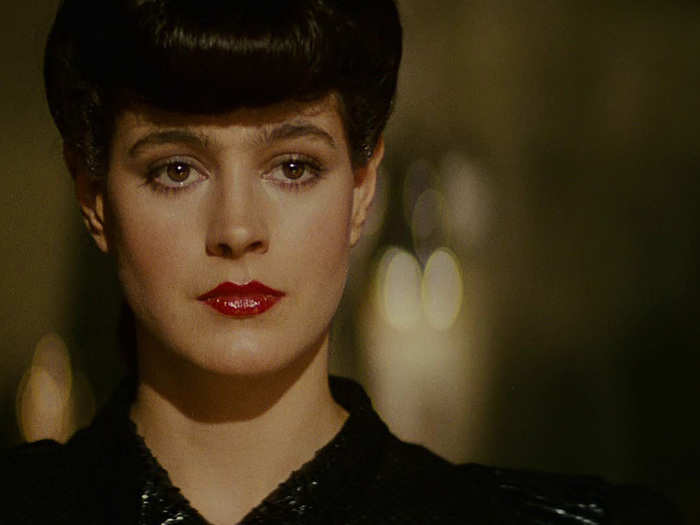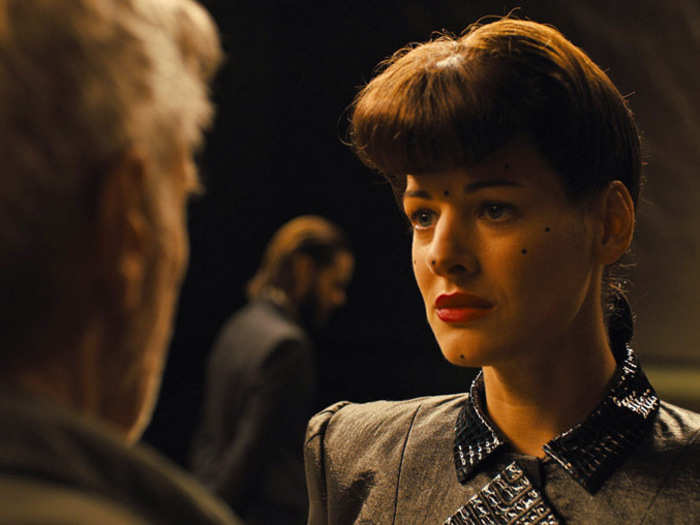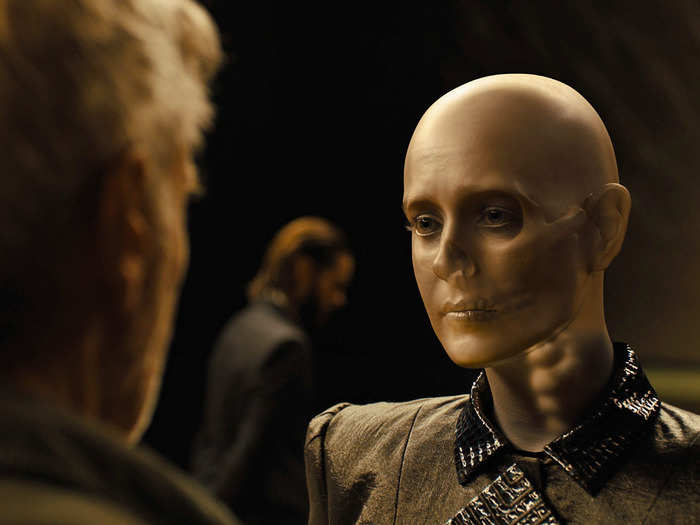- Home
- entertainment
- A body double, CGI skull, and secret filming sessions: Inside the yearlong process to bring this beloved character to the 'Blade Runner' sequel
A body double, CGI skull, and secret filming sessions: Inside the yearlong process to bring this beloved character to the 'Blade Runner' sequel
Why CGI actors will never replace humans

Making CGI Rachael act

With CGI Rachael now perfect, Nelson had to make her a believable actress. Following the shoot with Ford and Leto, Nelson said Villeneuve then did a “super secret Saturday session” with just Young and Peta where both wore motion-capture rigs and did the scene. The goal was to get the character to show confidence, longing, and rejection during her time on screen.
“At first we had our digital double come on screen becoming immediately emotional, it didn’t look like Rachael,” Nelson said.
Once again going back to the original “Blade Runner,” Nelson studied how Young played her, specifically Deckard and Rachael's first meeting. In it, Rachael is extremely confident. So Nelson changed course for the “2049” Rachael scene.
“I brought her out confident,” Nelson said. “Then Denis said when she gets to Deckard it’s like two people who haven’t seen each other in 20 years and when they see each other they can’t help themselves.”
In the final version of the "2049" Rachael scene, Rachael walks out of the shadows confident, then has a look of longing when she gets close to Deckard, then has a face of rejection when he says to Wallace that the real Rachael’s eyes were green.
“We took little subtle nuances from the original movie with our facial motion capture and put them into the performance,” Nelson said. “Down to her eyes tearing up and strands of her hair misplaced.”
Nelson said Villeneuve was very nervous about the Rachael scene and if they would be able to pull it off. He admitted to Nelson that he didn’t like a lot of the CGI human footage he’d seen in movies. But Nelson knew he had met his director’s high standard when Villeneuve gave him four words.
“For me, the satisfaction came when he said with his rich Montreal accent, ‘I deeply love it,’” Nelson said. “When he really loved something he would say, ‘I deeply love it,’ that’s when I knew we were there.”
Back to the drawing board

At this point Nelson took the footage shot and inserted what they had done with CGI Rachael, and showed what they had to Villeneuve and the producers. But no one was that impressed.
“They were like, ‘Well, it really looks like a woman that looks a lot like Sean Young, but it doesn’t look like Sean Young,’” Nelson recalled. “So I went back to the drawing board.”
Nelson went even deeper, and that’s where he found pay dirt.
“What I found is it's her imperfections that make her beautiful,” he said. “Her eyes are not symmetrical, her eyes actually stick out of her head a little more than most people. We studied how makeup was done when 'Blade Runner' was made. In fact, we went to every woman on the crew and asked about how makeup was done in the 1980s. We learned about the right shade of lip stick. Just subtle things from the first movie that we could put into our Rachael.”
Nelson went back to Denis and the producers with four scenes from the original “Blade Runner” and inserted CGI Rachael into a single shot in each scene. But he didn’t tell them what he did.
“The producers and Denis were like, ‘John, this is great but why are we looking at the first movie?’ and I told them what I did and they couldn’t tell, they actually got upset,” Nelson said. “They were like, ‘Why didn’t you tell us?’ And I was like, ‘Isn’t that the point? It’s supposed to be like the real thing.’”
Shooting the scene with a body double and Sean Young’s guidance

While all of that was going on, back on set Villeneuve shot the “Rita” scene with Ford and Leto. Actress Loren Peta was brought on as the Rachael body double. With Nelson and Young also on hand, the scene was done with dots all over Peta’s face, which would be needed when the footage went through the motion-capture phase. Peta’s face would be erased, and CGI Sean Young would be inserted.
“Sean would be sitting with Denis and they’d be talking about Loren’s performance as Rachael,” Nelson said. “She would advise him on the movements and the looks of Rachael. ‘I would have done it this way or that way,’ she would tell Denis.”
Creating the digital skull

Rachael was given the code name “Rita” during filming, and the scene was done often with a very small crew to ensure that what was being done would not get out to the public.
Nelson and his team started by creating a digital skull of the Rachael character. They scanned Young’s head and then were able to find a life cast of her that was done a few years after the original “Blade Runner." By combining both they created a CGI skull of her. Nelson and his team than began de-aging the CGI head using footage from the original “Blade Runner” as a guide.
Popular Right Now
Popular Keywords
Advertisement